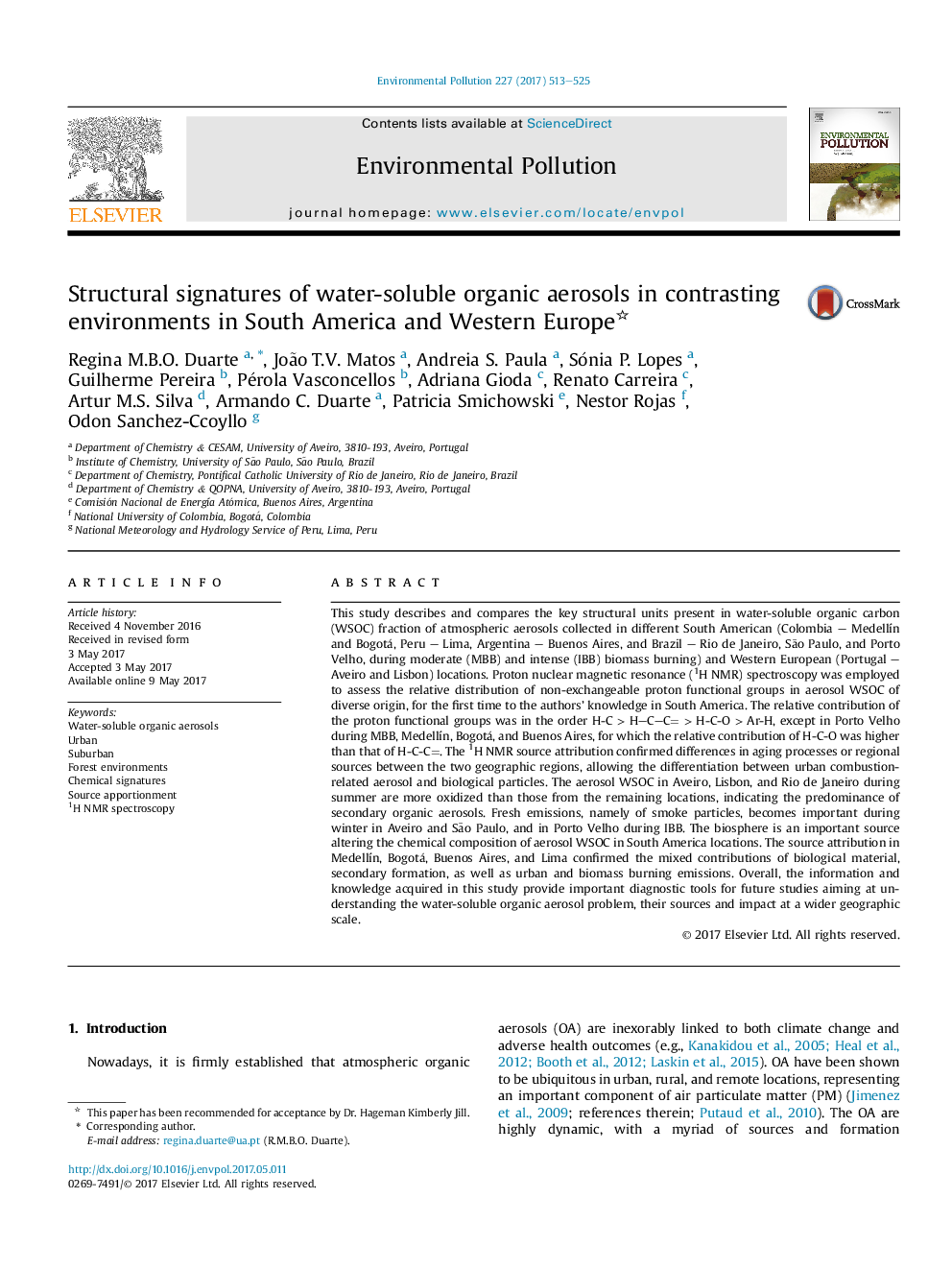| کد مقاله | کد نشریه | سال انتشار | مقاله انگلیسی | نسخه تمام متن |
|---|---|---|---|---|
| 5749175 | 1619146 | 2017 | 13 صفحه PDF | دانلود رایگان |
- Structural features of aerosol WSOC in South America and Western Europe.
- 1H NMR source attribution have been investigated for all aerosol WSOC samples.
- Aerosol WSOC in Western Europe largely more oxidized than in South America.
- Differences in aging processes and regional sources between the two regions.
- Biological particles are an important source of aerosol WSOC in South America.
This study describes and compares the key structural units present in water-soluble organic carbon (WSOC) fraction of atmospheric aerosols collected in different South American (Colombia - MedellÃn and Bogotá, Peru - Lima, Argentina - Buenos Aires, and Brazil - Rio de Janeiro, São Paulo, and Porto Velho, during moderate (MBB) and intense (IBB) biomass burning) and Western European (Portugal - Aveiro and Lisbon) locations. Proton nuclear magnetic resonance (1H NMR) spectroscopy was employed to assess the relative distribution of non-exchangeable proton functional groups in aerosol WSOC of diverse origin, for the first time to the authors' knowledge in South America. The relative contribution of the proton functional groups was in the order H-C > H-C-C= > H-C-O > Ar-H, except in Porto Velho during MBB, MedellÃn, Bogotá, and Buenos Aires, for which the relative contribution of H-C-O was higher than that of H-C-C=. The 1H NMR source attribution confirmed differences in aging processes or regional sources between the two geographic regions, allowing the differentiation between urban combustion-related aerosol and biological particles. The aerosol WSOC in Aveiro, Lisbon, and Rio de Janeiro during summer are more oxidized than those from the remaining locations, indicating the predominance of secondary organic aerosols. Fresh emissions, namely of smoke particles, becomes important during winter in Aveiro and São Paulo, and in Porto Velho during IBB. The biosphere is an important source altering the chemical composition of aerosol WSOC in South America locations. The source attribution in MedellÃn, Bogotá, Buenos Aires, and Lima confirmed the mixed contributions of biological material, secondary formation, as well as urban and biomass burning emissions. Overall, the information and knowledge acquired in this study provide important diagnostic tools for future studies aiming at understanding the water-soluble organic aerosol problem, their sources and impact at a wider geographic scale.
195
Journal: Environmental Pollution - Volume 227, August 2017, Pages 513-525
